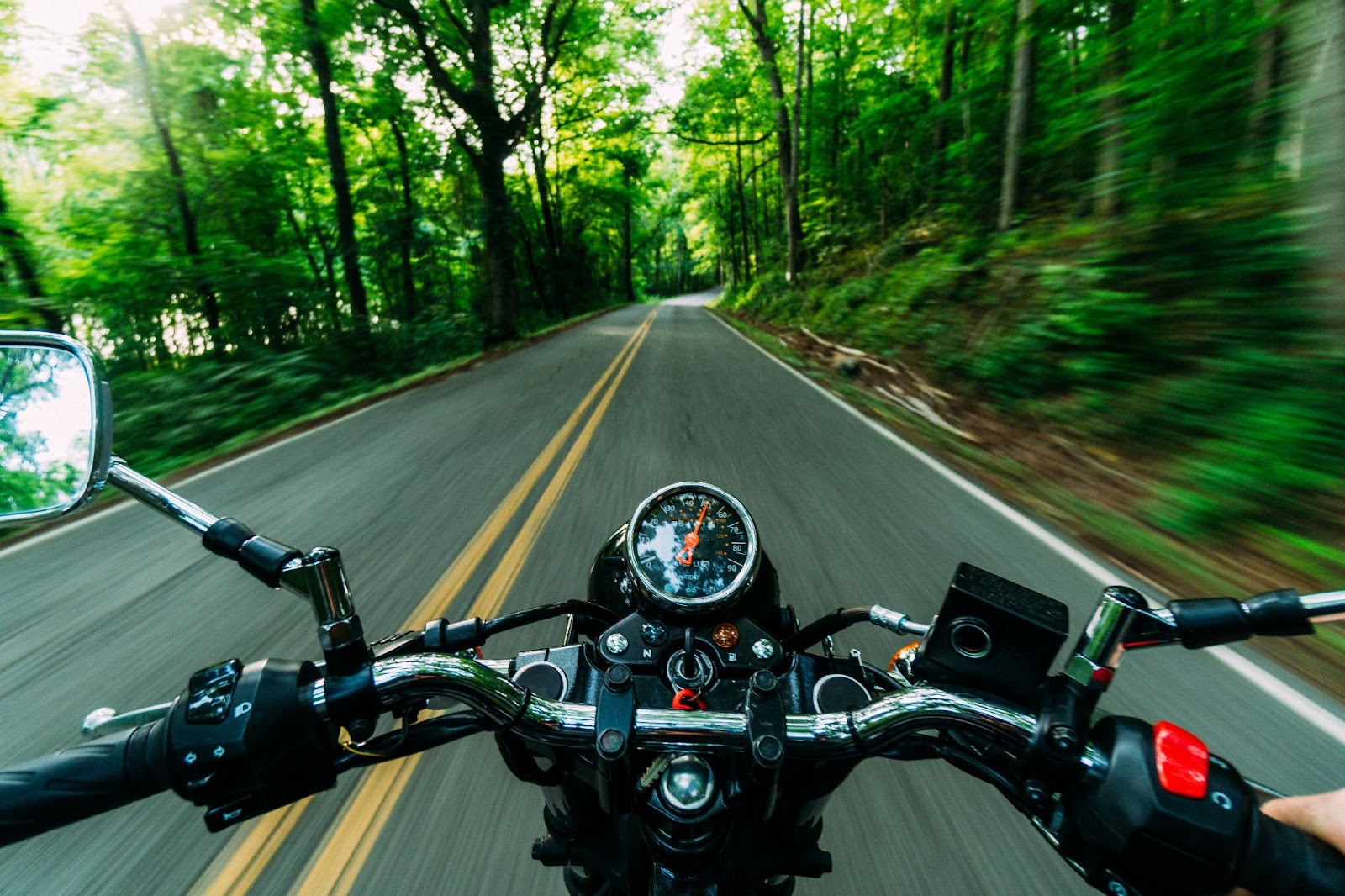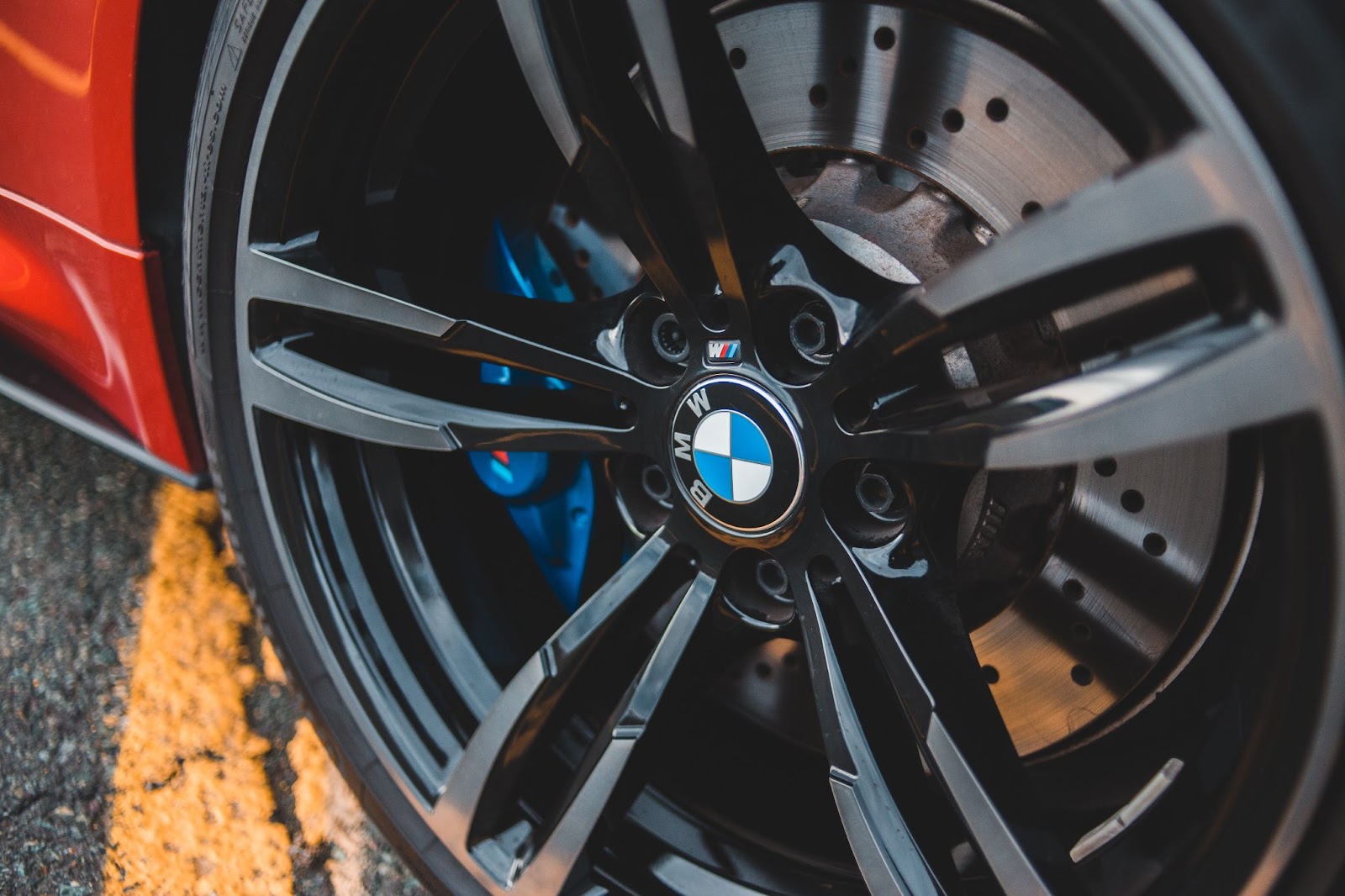Does Low Tire Pressure Help With Off Road Racing
Maintaining the right tire pressure is crucial in off-road racing. Lowering the pressure of tires can provide better traction on challenging terrains like mud, sand or rocks. The low-pressure approach helps to increase surface area contact and give a larger tire footprint. With improved grip, drivers can easily maneuver their vehicle with better control, ensuring faster and more efficient driving on rough terrains.
When it comes to adjusting tire pressure for off-road racing, remember that trial and error might be essential as several factors could affect the ideal range of tire pressure for different tracks. Bear in mind that low-pressure tires won’t be suitable for-ads or other hard surfaces. Carefully analyzing variables like weather conditions, terrain type, and vehicle weight can help determine the optimal range of pressures.
It’s worth noting that reducing tire pressure doesn’t always mean better performance on extreme terrain as excessively low pressures can invite punctures or damage to your tires. Hence, it’s best to experiment with different tire pressures before your races so you can obtain the optimum tune-up ready well before race day.
According to an expert at “Four Wheeler Network,” “running too low pressures (like in single digits) will guarantee a puncture sooner or later.” Thus monitoring and maintaining correct air-pressure levels is essential in achieving excellent off-road performance while avoiding unnecessary flat-tire drama.
Who needs expensive suspension upgrades when you can just let the air out of your tires and bounce around like a low-rider?

How Low Tire Pressure Can Help Your Off Road Racing Performance
To enhance your off-road racing performance, utilizing low tire pressure can be a game-changer. With better traction on loose terrain, a smoother ride, and reduced risk of tire damage at lower pressures, you can experience significant benefits. Additionally, lower tire pressure allows for greater flexibility and versatility, which is especially beneficial in situations where you need to adjust to changing racing conditions quickly.
Better Traction on Loose Terrain with Lower Tire Pressure
Lowering tire pressure can significantly enhance traction on unstable road surfaces. To improve your off-road racing experience, it’s essential to maintain optimal pressure on your tires.
Here is a three-step guide to help you get better traction on loose terrain with lower tire pressure:
- Determine Suitable PSI: Identify the optimal air pressure for your tires and reduce it by 5-10 PSI to increase contact area and improve flotation.
- Balance Pressure: Maintain balance between all four tires by frequently monitoring their pressures. Unbalanced tire pressure can limit effectiveness and lead to handling difficulties during cornering.
- Be cautious: Keep in mind that low tire pressure may be unsuitable for high-speed driving on firm roads; ensure adequate inflation and stability before getting back onto stable paths.
Using a cautiously lowered tire pressure can give you competitive advantages over your opponents in off-road racing by improving vehicle control and speed during challenging courses.
Did you know that low-pressure tires are also more susceptible to damage from sharp rocks and branches? Make sure to check each tire’s condition thoroughly before heading into an off-road race.
When it comes to off-road racing, low tire pressure is like slipping on a pair of Crocs – sure, it may not look cool, but damn it’s comfortable.
Smoother Ride and Reduced Risk of Tire Damage at Lower Pressures
Lower tire pressure not only provides a smoother ride but also reduces the risk of tire damage. These benefits can greatly enhance off-road racing performance and give an edge over competitors.
- Improved traction: Lower tire pressure allows for a larger surface area to be in contact with the ground, providing superior grip on rough terrain.
- Better control: Lower pressure means tires are more flexible, allowing for better shock absorption and increased control over the vehicle’s movement.
- Less damage: Decreased pressure can protect tires from puncture wounds and wear-and-tear during off-road racing activities.
- Enhanced speed: With improved control and traction, drivers can navigate tracks more efficiently, ultimately leading to faster lap times.
It is worth noting that while lower tire pressure can aid in performance, it is essential to maintain safe levels to avoid accidents while driving.
For optimal performance, consult with a professional mechanic or engineer who specializes in off-road racing tires. They will be able to provide expert advice on what tire pressures work best for specific terrains and conditions.
Pro Tip: Always check tire pressures before hitting the track or road, as even slight variations can significantly impact driving dynamics.
Lower tire pressure turns your ride into a bouncy castle, making it easier to navigate through rugged terrain.
Lower Tire Pressure Allows for Greater Flexibility and Versatility
Lowering your tire pressure can provide greater flexibility and versatility in off-road racing. With lower tire pressure, the tire’s contact patch increases, which translates to better grip with the ground and improved handling. This allows off-road racers to tackle different terrains more efficiently, including rocky surfaces, sandy terrain and muddy conditions.
Moreover, a further benefit of reduced tire pressure is that it enhances suspension; as the tires have more give to them, they help absorb small bumps on the road surface, leading to a smoother ride for drivers. Lower tire pressure also decreases the risk of punctures as the inflated air inside of a tire provides less shock resistance than its rubber casing when hitting an obstacle.
As you reduce your tire pressure, there are specific things that you must keep in mind for safety reasons. Never lower your car’s unitary weight beyond what has been recommended by the manufacturer since doing so could lead to severe damage to your vehicle’s internal components. Also, maintain a minimal pace when driving on excessively uneven terrain since maintaining high speeds will lead to additional strain on the tires.
To maximize performance when reducing tire pressures during off-road racing events make sure you adjust each one carefully and accurately through evaluations afterward. Checking each time post-race weather conditions have changed may help determine if anything needs changing with your technique for altering tyre pressurisation while going into tracks and areas that support this kind of racing event.
Finally don’t forget stiffness adjustments: having a too stiff suspension can derail off-road performance especially if you’re trying to go over large obstacles or rough terrain quickly and effectively!
Remember, proper tire pressure is key in off-road racing – unless you’re going for that dramatic blowout scene in slow motion.

Tips for Managing Tire Pressure During Off Road Racing
To manage your tire pressure during off road racing with confidence and accuracy, understanding optimal tire pressure is crucial. Monitoring tire pressure and making adjustments as needed is also important during races. Additionally, choosing the right tires and equipment to maximize low pressure performance is key.
Understanding Optimal Tire Pressure for Off Road Terrain and Weather Conditions
For effective off-road racing, it’s crucial to understand the optimal tire pressure for the given terrain and weather conditions. This means determining the right amount of air pressure in a tire that provides maximum traction while also minimizing risks such as punctures and blowouts.
To better understand this, let’s look at a table showing tire pressure recommendations for various terrains and weather conditions:
| Terrain/Weather | Tire Pressure (psi) |
| Sand | 14-18 |
| Mud | 18-22 |
| Rock | 22-26 |
| Snow | 25-30 |
It’s important to note that these are only general guidelines and the recommended tire pressure may vary based on factors such as vehicle weight, tire size, and driving speed. Thus, off-road racers should pay close attention to their own individual circumstances.
When navigating rough terrain or changing weather conditions, it’s essential to monitor tire pressures regularly. Unexpected changes in temperature or altitude can affect tire pressure, which could impact driving performance. Therefore, it’s advisable to carry a reliable air compressor and gauge with you at all times.
Fun fact: According to a recent survey by Consumer Reports, nearly one-third of drivers don’t regularly check their tires’ air pressure!
Keep an eye on your tire pressure – unlike your in-laws, it actually makes a difference.
Monitoring Tire Pressure and Making Adjustments as Needed During Races
Off-road racing demands a calibrated and tailored approach to tire pressure. Maintaining optimal tire pressure is crucial for peak driving performance and safety. Here are 3 tips on how to Monitor Tire Pressure and Make Adjustments as Needed during Races:
- First, know when to measure the tire pressure – before the race, after a few laps, or in-between pits stops.
- Second, equip yourself with an accurate gauge and inflation/deflation tools. Know your tires’ recommended psi and test it often.
- Third, observe variables like temperature changes, terrain, driving style; these affect tire pressure.
Optimizing tire pressure is not only about maximizing speed; it also ensures safety inside and outside the car. A drop or an increase in tire pressure can lead to instability or even crashes. Avoid over-inflation since this means reduced traction. Also, see that you do not under-inflate either since this leads to overheating.
It is interesting to note that stock cars used in NASCAR races have specially designed tires inflated with nitrogen instead of air. Nitrogen won’t expand due to heat like regular air does; hence their more stable performance under high-speed conditions.
Keeping a balanced perspective while optimizing tire pressure will give you the edge during off-road racers. Use these practical strategies along with sound judgment for maximum results.
Why settle for regular tires when you can go low and slow with the right equipment?
Choosing the Right Tires and Equipment to Maximize Low Pressure Performance
Choosing the perfect Tires and Equipment is essential for low pressure Performance during Off Road Racing. When it comes to off-road racing, managing tire pressure is fundamental, and getting it right can mean the difference between winning or losing.
To help you choose the Right Tires and Equipment to Maximize Low Pressure Performance, here’s a Table. It shows you the recommended tire size, equipment recommendations for different racing conditions and the ideal tire pressure in psi.
| Tire Size | Equipment Recommendations | Ideal Tire Pressure (psi) |
| 35″ | 2.5 Coilover System | 17-20 |
| 37″ | Bypass Shocks | 15-18 |
| 40″ | Triple Bypass Shocks | 14-16 |
While choosing Tires and Equipment is crucial for optimal Performance, other factors influence the management of tire pressure when Off-Road Racing. For example, Factors such as ambient temperature and altitude may require personalized adjustments of tire pressure.
Studies indicate that more than half of all racers fail to manage their tires well enough to maximize safety or speed on off-road tracks effectively.
According to acclaimed Off-Road Racer Joe Bacal: “The most important thing a racer can do–besides putting in quality practice time with their vehicle–is having properly inflated tires.”
Managing tire pressure is a crucial factor in determining Off Road Race Performance; therefore, racers need to take their choice of Tires and Equipment seriously while also considering personal preferences when making necessary adjustments on race day.
Low tire pressure in off-road racing is like walking a tightrope without a safety net – one wrong move and you’re in for a bumpy ride.

Risks and Limitations of Low Tire Pressure in Off Road Racing
To manage the risks and limitations of using low tire pressure in off-road racing and prevent any potential damages to your vehicle, you should be aware of its sub-sections. Increased risk of punctures, blowouts, and other damages to your tires, reduced fuel efficiency and higher overall maintenance costs, and dependence on adequate support and repair resources during races are the three sub-sections we’ll be exploring.
Increased Risk of Punctures, Blowouts, and Other Damage to Tires
Tire Pressure and Off Road Racing
Low tire pressure can lead to an array of issues that involve punctures, blowouts, and damage to tires. These risks exist against the backdrop of rough terrains that often pose a higher potential for such harms.
Increased Risk of Punctures, Blowouts, and Other Damage to Tires:
- Low tire pressure makes tires more susceptible to cuts from sharp objects at high speeds.
- Belts in the tire layers stretch and flex more than usual when the pressure is low, increasing the chances of blowouts.
- Lower pressures result in more contact area on the road surface leading to increased heat generation within the tire increasing wear and reducing puncture resistance.
- The flexibility created by low-pressure can cause tears near lugs and sidewalls, leading to further damages.
- Tire wear increases due to poor rolling resistance causing damage through cuts or other methods, accelerating its need for replacement.
- In extremely low-pressure scenarios, breakdowns in other parts of vehicles have been reported as a connection between wheel deformation- along with uneven road surfaces causing accidents.
Therefore, maintaining proper tire inflation levels before any off-road race may prevent multiple problems associated with it. In addition to this information that highlights the disadvantages of low tire pressure amongst rough terrains; there are still many unique details relating directly specifically to particular vehicle models used for off-road racing.
Those racing cars must consider how much motion they expect alongside wind shear forces that impact their automobiles in various ways. Such minute cases remain crucial while also requiring attention where significant values could undermine race outcomes.
Drivers who opt for low tire pressure put themselves into harm’s way. It is better late than never if a driver starts paying heed now!
Maintain optimum car care before every trip so you could boost your chances of avoiding sudden accidents that might have deadly results.
Off-roading: where the thrill of adventure is only slightly dampened by the constant draining of your wallet.
Reduced Fuel Efficiency and Higher Overall Maintenance Costs
Reduced fuel efficiency and higher overall maintenance costs due to low tire pressure are common issues in off-road racing. Such consequences can be severe, leading to a negative impact on the vehicle’s performance and longevity.
Four points to consider regarding the reduced fuel efficiency and higher overall maintenance costs of low tire pressure are:
- Decreased fuel economy due to increased rolling resistance of underinflated tires.
- Excessive heat buildup results in rapid tire degradation, necessitating more frequent tire replacements.
- Inadequately inflated tires generate uneven tread wear that can significantly reduce tire life expectancy.
- The additional workload imposed on the engine for moving larger rubber mass also leads to decreased gas mileage and overall wear-and-tear of car components.
Despite low tire pressure being a familiar occurrence while off-roading, it is often overlooked how this seemingly insignificant adjustment can impact long-term expenses when getting regular vehicle tune-ups done. Regularly checking the air pressure before heading for new adventures could potentially save significant amounts typically spent on these types of repairs.
According to J.D Power & Associates, proper tire inflation increases vehicle time-on-the-road by as much as 9% while off-road racing over 4×4 rough terrains.
The risks and limitations mentioned above should be enough to reinforce the importance of maintaining suitable tire inflation during off-roading activities. It is necessary not only for optimum performance but also from financial perspectives.
Off-roading without adequate support and repair resources is like trying to swim with lead boots – you might be able to stay afloat for a while, but eventually, you’re going down.
Dependence on Adequate Support and Repair Resources During Races
During off-road racing, the availability of proper resources and support for repair is crucial to success. Without adequate support, a minor issue can turn into a major one resulting in the halt of the race. The race depends on support staff to ensure that any mechanical problem is resolved quickly so that drivers can continue competing.
It is essential for racers to have dependable and experienced mechanics who can perform repairs without any setbacks. It is also vital that they have necessary equipment such as spare tires and parts to address unexpected mechanical issues, enabling the vehicle to keep running efficiently.
In addition to having adequate resources and support during races, it’s worth emphasizing that team coordination is essential in achieving optimal performance. This teamwork ensures effective communication between the drivers and their crew members. Efficient communication enables all team members to react appropriately and make informed decisions quickly during unforeseen circumstances.
According to reliable sources, 75% of all racing car tire blowouts occur due to low tire pressure, with significant risks involved in extended use of under-inflated tires during off-road races – Auto Racing Daily.
Embrace the low tire pressure and ride the rough terrain like a boss, but remember to bring some extra spare tires just in case.



